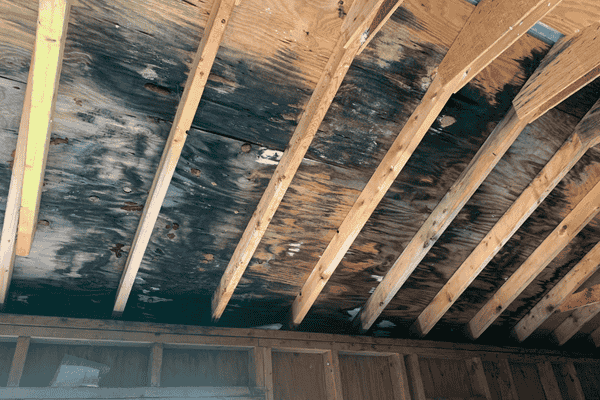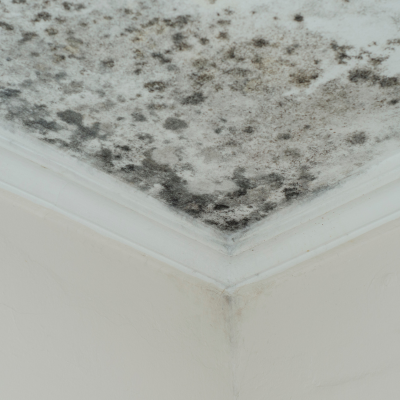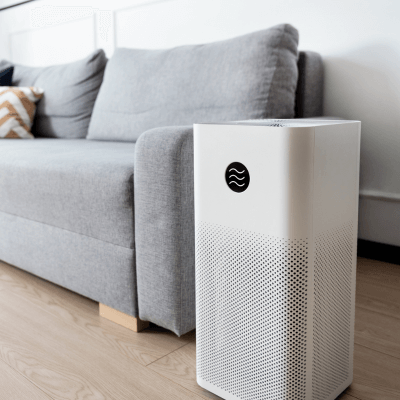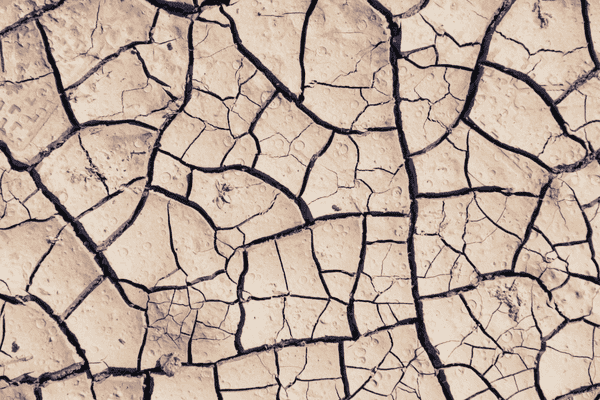Think Mold is Gone Just Because It’s Dry? Think Again.

You spot some mold creeping up your bathroom wall. Gross. But instead of panicking, you crank up a fan, air things out, and assume that once it dries, the problem takes care of itself. Does mold die when it dries out? Spoiler alert: It doesn’t.
Mold is a stubborn survivor, and while moisture fuels its growth, simply drying out an area doesn’t mean the spores are gone for good. In fact, dried-out mold can become even more dangerous, lurking in your home, waiting for the next wave of moisture to reactivate.
In this article, we’ll uncover the truth about mold and moisture, the hidden dangers of dormant mold, and why proper removal—not just drying—is the only way to truly get rid of it.
What Does Mold Need to Survive?

Mold is a type of fungus that thrives in specific environmental conditions. Though thousands of mold species exist, they all share three main requirements to grow and spread:
- Moisture: Mold growth is impossible without moisture. Leaky pipes, high humidity, and water damage create ideal conditions for mold to flourish.
- Organic material: Mold feeds on materials such as drywall, wood, fabric, and even dust, making homes the perfect breeding ground.
- Optimal temperatures: Most mold species prefer temperatures between 60-80°F—a range that matches typical indoor conditions.
Because moisture is essential, it may seem logical to assume that removing it will eliminate mold entirely. However, this assumption is misleading.
Does Mold Die When It Dries Out? Understanding Dormant Mold
The short answer is no. While drying out moldy surfaces removes moisture, it does not kill the mold or eliminate the threat.
Instead, mold enters a dormant state. Like seeds waiting for rain, mold spores remain in the environment, inactive but ready to reactivate as soon as moisture returns. This means that even if a mold outbreak seems under control, it can quickly come back under the right conditions.
Scientific studies have shown that some mold spores can survive extreme dehydration for extended periods. Once they encounter moisture again—even in the form of high humidity—they can start growing and releasing spores into the air.
So, if you’ve ever had a mold issue that seemed “gone” only to reappear later, this could be why. Dried mold isn’t dead—it’s simply waiting for the right opportunity to grow again.
The Hidden Dangers of Dormant Mold
Many homeowners believe that once mold dries out, it stops being hazardous. Unfortunately, this isn’t the case. Even dormant mold can pose serious health and property risks.
1. Mold Spores Can Spread
Mold reproduces through microscopic spores that become airborne easily. Even if mold appears inactive, its spores can circulate through your home’s air, landing on new surfaces and waiting for moisture to return.
2. Health Risks and Allergies
Exposure to mold spores—whether active or dormant—can trigger allergic reactions, worsen asthma symptoms, and irritate the respiratory system. Symptoms may include:
- Sneezing and runny nose
- Coughing and wheezing
- Skin rashes
- Sinus congestion
- Eye irritation
People with compromised immune systems, asthma, or mold allergies are particularly vulnerable to mold exposure.
3. Structural Damage to Your Home
Mold feeds on organic materials like wood and drywall. Even dormant mold can compromise your home’s structure over time, weakening walls, ceilings, and flooring.
How to Properly Remove Mold – Drying Isn’t Enough

Now that we understand that drying mold isn’t enough, let’s explore effective mold removal techniques.
1. Conduct a Mold Inspection
The first step is a thorough mold inspection. Identifying visible mold is easy, but hidden mold growth inside walls, ceilings, or ventilation systems is a bigger issue. A professional mold inspector, such as Howard Environmental, can determine the extent of the problem.
2. Use Effective Mold-Killing Solutions
Basic soap and water won’t eliminate mold. Instead, use these solutions:
- An EPA-approved mold killer
- A mixture of white vinegar and baking soda (natural alternative)
- Hydrogen peroxide for non-porous surfaces
3. HEPA Vacuuming
Standard vacuums can spread mold spores instead of capturing them. A HEPA-filter vacuum effectively removes spores from surfaces and prevents airborne contamination.
4. Remove and Replace Severely Affected Materials
If mold has extensively infiltrated drywall, insulation, or carpets, replacing the affected materials may be the only safe option.
5. Consider Professional Mold Remediation
If the mold infestation is widespread or inside walls, professional remediation is recommended. Experts use specialized equipment to remove mold safely and prevent recurrence.
Read more from the EPA: A Brief Guide to Mold, Moisture and Your Home
Preventing Future Mold Growth

Once mold has been removed, the next step is to prevent its return. Here’s what you can do:
- Fix water leaks immediately.
- Use dehumidifiers in damp areas to control humidity.
- Improve ventilation in bathrooms, kitchens, and basements.
- Install a HEPA air purifier to capture airborne mold spores.
- Regularly clean and inspect areas prone to moisture.
By taking proactive steps, you can keep mold from becoming a recurring issue.
Conclusion: Treating Dried Mold the Right Way
To answer the question once and for all—Does mold die when it dries out? No, it becomes dormant, waiting for moisture to return.
The safest and most effective solution is proper mold removal and moisture control. If you suspect mold in your home, the best course of action is a professional mold inspection to assess the situation accurately.
At Howard Environmental, we specialize in fair, reliable mold testing and inspections without unnecessary upselling. If you’re in Austin, Bee Cave, Cedar Park, Round Rock, or nearby areas, contact us today to schedule a consultation.
Howard Environmental – Trustworthy mold inspections for a healthier home.

